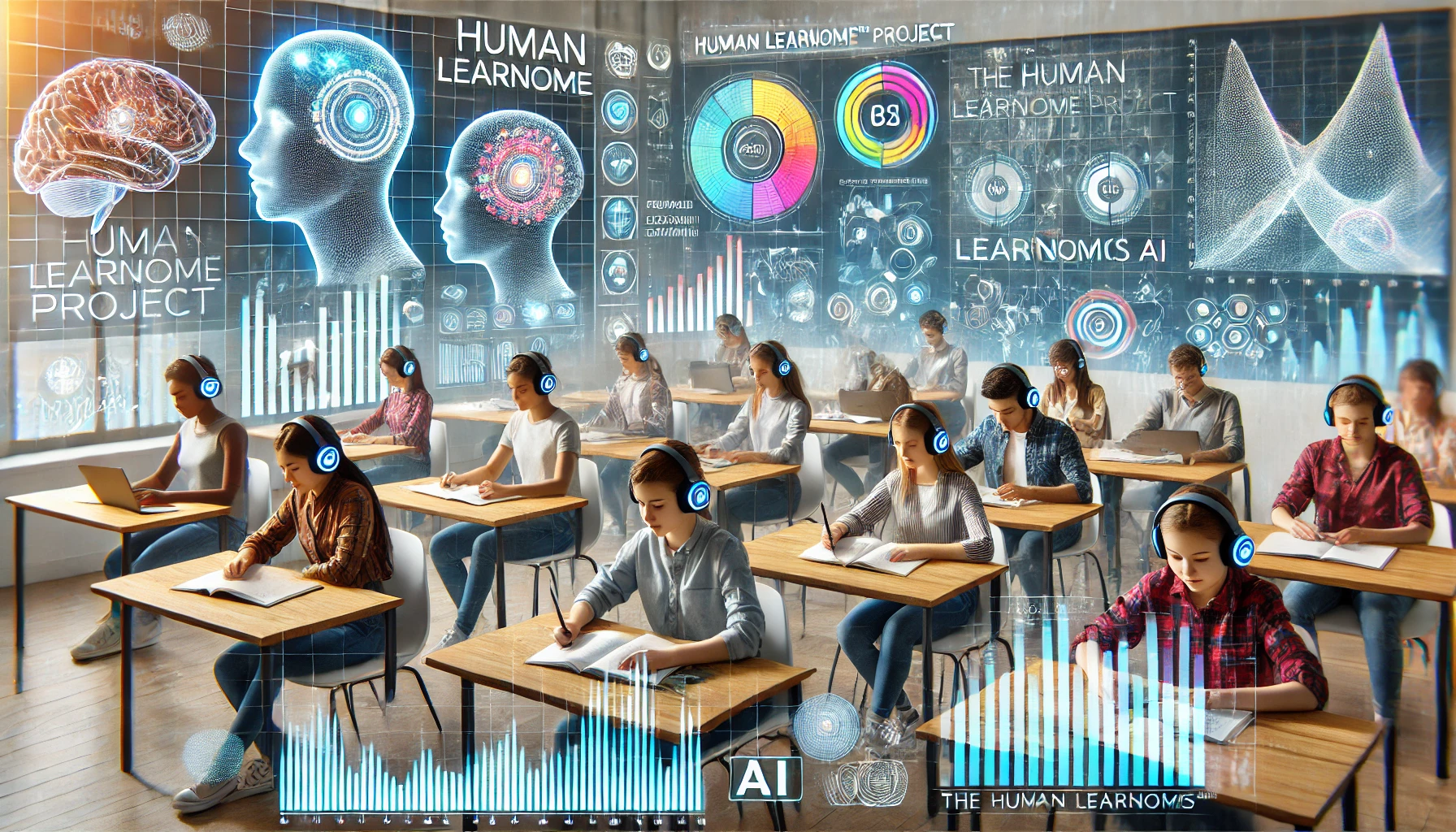Machine Learning is revolutionizing the education sector by personalizing learning, enhancing student engagement, and providing teachers with valuable insights. This transformative technology analyzes vast amounts of data to identify patterns, predict outcomes, and adapt to individual student needs. By harnessing the power of Machine Learning, educators can tailor instruction, offer targeted support, and ultimately improve learning outcomes for all students. Dive into Machine Learning and discover how it is shaping the future of education.
Machine Learning Fundamentals
Defining Machine Learning
One of the key components of artificial intelligence (AI) is Machine Learning, a powerful technology that enables machines to learn from data without being explicitly programmed. In simple terms, machine learning algorithms use data to find patterns and make decisions or predictions without human intervention.
Types of Machine Learning
With Machine Learning, there are three main types: Supervised Learning, Unsupervised Learning, and Reinforcement Learning. Supervised learning involves training the model on labeled data, where the algorithm learns to map input data to the correct output. Unsupervised learning, on the other hand, deals with unlabeled data and finds hidden patterns or intrinsic structures. Reinforcement learning is based on rewarding desired behaviors and punishing undesired ones.
| Supervised Learning | Unsupervised Learning |
| Involves labeled data for training | Works with unlabeled data |
| Maps input data to correct output | Finds hidden patterns or structures |
| Examples: Classification, Regression | Examples: Clustering, Dimensionality Reduction |
| Used in predictive analytics | Helps in data exploration |
Plus, understanding the differences between these types of machine learning is crucial in determining the most suitable approach for a specific task or problem. While supervised learning is widely used for tasks like image recognition and speech recognition, unsupervised learning is valuable in areas such as anomaly detection and market segmentation. Reinforcement learning, popular in gaming and robotics, focuses on learning through trial and error with a reward system.
- Supervised Learning: Used for labeled data and mapping input to correct output.
- Unsupervised Learning: Ideal for data exploration and finding hidden patterns.
- Reinforcement Learning: Focuses on rewarding desired behaviors through trial and error.
After exploring the fundamentals of machine learning, it is evident that the diverse types offer unique approaches to problem-solving and decision-making. Each type has its strengths and applications, making them valuable tools in artificial intelligence.
The Role of AI in Education
While AI technologies are transforming various industries, their impact on education is particularly significant. Artificial intelligence is revolutionizing the way students learn, teachers teach, and schools operate. By leveraging AI tools and techniques, educators can create more personalized learning experiences, automate administrative tasks, and improve overall educational outcomes.
Enhancing Personalized Learning
On the forefront of the transformational power of AI in education is the concept of personalized learning. AI algorithms analyze student data to tailor instructional strategies according to individual learning styles, preferences, and pace. This level of customization enhances student engagement, motivation, and comprehension, ultimately leading to improved academic performance. With AI, educators can provide real-time feedback, recommend specific learning materials, and track student progress more effectively.
Automating Administrative Tasks
With AI, educational institutions can streamline time-consuming administrative tasks such as grading assignments, scheduling classes, and managing student records. Automating these processes frees up educators to focus on teaching and mentoring students, rather than getting bogged down by paperwork. AI-powered systems can also optimize resource allocation, identify at-risk students, and enhance school safety and security measures.
Automating administrative tasks not only increases operational efficiency but also reduces the likelihood of errors and discrepancies in school management. By harnessing AI in these areas, educators can devote more time and energy to meaningful interactions with students, fostering a more productive and supportive learning environment.
Machine Learning in Educational Assessment
You may be familiar with the term “machine learning,” but do you know how it impacts educational assessment? In education, machine learning plays a crucial role in improving the accuracy and efficiency of assessment processes. By incorporating advanced algorithms and data analysis techniques, educators can gain valuable insights into students’ learning patterns, performance trends, and areas of improvement.
Intelligent Tutoring Systems
On the forefront of educational technology, intelligent tutoring systems leverage machine learning algorithms to create personalized learning experiences for students. These systems adapt to individual learning styles, pace, and knowledge levels, providing tailored guidance and feedback to enhance learning outcomes. By analyzing student interactions and performance data in real-time, intelligent tutoring systems can identify strengths and weaknesses, offering targeted support and challenges to optimize learning.
Adaptive Testing and Grading
Learning is also revolutionized through adaptive testing and grading systems powered by machine learning. These systems utilize algorithms to customize assessments based on students’ responses, ensuring that questions align with their proficiency levels. Adaptive testing not only provides a more accurate evaluation of students’ knowledge but also offers them a less stressful testing experience by adjusting difficulty levels dynamically.
Adaptive testing and grading systems have the potential to transform the traditional assessment landscape by offering a more comprehensive and nuanced evaluation of students’ abilities. Through machine learning, educators can gain deeper insights into students’ learning trajectories and provide timely interventions to support their academic growth.
Natural Language Processing in Education
Once again, we explore into Natural Language Processing (NLP) and its significance in education. NLP, a branch of artificial intelligence that focuses on the interaction between computers and human language, has the potential to revolutionize the way we learn and teach.
Sentiment Analysis for Feedback
Natural Language Processing plays a crucial role in sentiment analysis for feedback in education. By utilizing NLP algorithms, educators can analyze students’ feedback, comments, and responses to understand their sentiments and emotions towards the learning process. This insight can help educators tailor their teaching methods, provide personalized assistance, and address any issues that students may be facing.
Text-Based Learning Platforms
Learning through text-based platforms is becoming increasingly popular in education, offering students the flexibility to learn at their own pace and in a format that suits their learning style. These platforms leverage Natural Language Processing to provide personalized recommendations, assess students’ understanding through automated quizzes, and generate interactive learning experiences based on text inputs.
Analysis: Natural Language Processing in education opens up a world of opportunities for personalized learning experiences. By using NLP for sentiment analysis, educators can gain valuable insights into students’ emotions and feedback, leading to more effective teaching strategies. Text-based learning platforms, powered by NLP, offer students a dynamic and interactive way to engage with educational content, catering to individual preferences and enhancing the learning process.
Computer Vision in Education
Your institution can greatly benefit from computer vision technologies in the field of education. These technologies enable machines to interpret, process, and understand visual information from the real world, making learning more interactive and engaging. One key area where computer vision can revolutionize education is in image recognition for interactive learning.
Image Recognition for Interactive Learning
Learning through images and visuals has always been a powerful tool in education. With machine learning algorithms, computers can now recognize and analyze images to provide instant feedback and personalized learning experiences. Imagine students being able to learn about biology by simply pointing their smartphones at a plant and instantly receiving information about its species, habitat, and characteristics. This kind of interactive learning can significantly enhance knowledge retention and engagement.
Video Analysis for Student Engagement
Interactive videos are becoming increasingly popular in education, allowing students to learn at their own pace and engage with the content in a dynamic way. Computer vision can further enhance this experience by analyzing student behavior and engagement during video lessons. By tracking students’ facial expressions, attentiveness, and interactions, educators can gain valuable insights into their learning experience and adapt their teaching methods accordingly.
Another benefit of video analysis in education is the ability to detect signs of student struggle or disengagement early on. Educators can intervene and provide additional support to help students grasp difficult concepts and stay motivated throughout their learning journey. By utilizing computer vision technologies, schools can create a more personalized and effective learning environment for every student.
Deep Learning in Education
All educational institutions can benefit from integrating deep learning into their systems. Deep learning is a subset of machine learning models that are based on artificial neural networks. These networks are inspired by the structure and function of the human brain and are capable of learning from large amounts of data to make predictions and decisions. In the field of education, deep learning can revolutionize how we personalize learning experiences for students.
Neural Networks for Predictive Modeling
Neural networks are a fundamental component of deep learning models used in education for predictive analytics. By analyzing patterns in student data such as performance, behavior, and engagement, neural networks can forecast outcomes and provide insights to educators. This predictive modeling helps in early identification of at-risk students, personalizing learning paths, and improving overall student success rates.
Convolutional Neural Networks for Image Classification
Any educational institution that deals with image data, such as medical schools or art programs, can benefit from convolutional neural networks (CNNs) for image classification tasks. CNNs are specifically designed to analyze visual data by automatically learning features and patterns from images. These networks are capable of recognizing objects, people, handwriting, and more, making them valuable for tasks like grading assignments or analyzing medical images.
Understanding Convolutional Neural Networks for image classification is crucial for educators looking to leverage visual data in their teaching methods. CNNs have shown remarkable accuracy in tasks like facial recognition, object detection, and image segmentation. By utilizing CNNs, educational institutions can enhance the efficiency and accuracy of image-based tasks, leading to more personalized and effective learning experiences for students.
Machine Learning for Teacher Professional Development
For educators, continuous learning and professional development are important for growth and effectiveness in the classroom. Machine learning plays a crucial role in revolutionizing teacher professional development by providing personalized and data-driven insights to educators.
Identifying Knowledge Gaps
Learning algorithms can analyze vast amounts of data to identify specific areas where teachers may have knowledge gaps. By tracking performance, engagement, and feedback, machine learning algorithms can pinpoint areas where educators may need additional support or training.
Customized Training Recommendations
To enhance teacher professional development, machine learning algorithms can generate customized training recommendations based on individual needs and learning styles. These recommendations can include specific courses, workshops, or resources that align with the educator’s goals and areas for improvement.
The personalized nature of these training recommendations can significantly benefit teachers by addressing their unique needs and helping them grow in areas that matter most for their professional development. This tailored approach can lead to more effective teaching practices, improved student outcomes, and enhanced job satisfaction for educators.

Ethics and Bias in Machine Learning
To ensure the responsible and ethical use of machine learning in education, it is crucial to address issues of bias and ethics within algorithms. Machine learning algorithms have the potential to perpetuate and even amplify existing biases present in data. This can lead to unfair decision-making processes, particularly in high-stakes areas like education.
Fairness and Transparency in Algorithms
One of the fundamental challenges in machine learning is ensuring fairness and transparency in algorithms. It is imperative to evaluate algorithms for any biases that may impact certain groups unfairly. Transparency in the decision-making process is crucial to ensure that outcomes are not influenced by hidden biases.
Mitigating Bias in Educational Data
Algorithms used in education must be carefully designed to mitigate bias in the data they are trained on. This involves closely examining the data sources, identifying any potential biases present, and taking steps to address them before the algorithm is deployed in educational settings.
Educational institutions must prioritize the mitigation of bias in their machine learning systems to ensure fair and equitable outcomes for all students. By actively addressing bias in educational data, institutions can create a more inclusive learning environment and reduce the risk of perpetuating discrimination through machine learning technologies.
Real-World Applications of Machine Learning in Education
Intelligent Virtual Learning Environments
After understanding the basics of machine learning in education, it is fascinating to explore how it is being applied in real-world scenarios. One such application is Intelligent Virtual Learning Environments, where machine learning algorithms are used to create personalized learning experiences for students. These environments can analyze a student’s learning patterns and preferences to tailor the content and delivery methods to suit their individual needs.
AI-Powered Adaptive Learning Systems
Education has seen a significant transformation with the introduction of AI-powered Adaptive Learning Systems. These systems utilize machine learning to assess a student’s performance in real-time and adjust the curriculum accordingly. This personalized approach not only helps students grasp concepts more effectively but also allows educators to identify areas where additional support may be needed.
Plus, AI-powered adaptive learning systems can provide valuable insights into student progress and help track their development over time. Educators can use this data to intervene early if a student is struggling or to challenge those who are excelling, ultimately improving the overall learning experience.
Challenges and Limitations of Machine Learning in Education
Data Quality and Availability
Not surprisingly, one of the significant challenges facing machine learning in education is the quality and availability of data. For machine learning algorithms to yield accurate results, they require vast amounts of high-quality data. However, educational data is often messy, incomplete, and disparate, making it challenging for algorithms to extract meaningful patterns and insights. For instance, student data may be recorded differently across various systems, leading to inconsistencies that can affect the performance of machine learning models.
Ensuring Human Oversight and Accountability
Challenges arise when it comes to ensuring human oversight and accountability in the implementation of machine learning in education. For machine learning models to be effective and ethical, there must be mechanisms in place for humans to interpret and act upon the results produced by these algorithms. Quality oversight is crucial to prevent biases, errors, or unintended consequences that may negatively impact students’ learning experiences. Additionally, ensuring accountability means that educators and policymakers must understand the limitations of machine learning algorithms and not blindly rely on their recommendations without critical evaluation.
The Future of Machine Learning in Education
Despite the current advancements in machine learning in education, the field continues to evolve rapidly, presenting a plethora of opportunities and challenges. With the integration of AI and machine learning in educational settings, the future of education is poised to undergo a significant transformation.
Emerging Trends and Innovations
An exciting emerging trend in machine learning in education is personalized learning. By utilizing predictive analytics and machine learning algorithms, educators can tailor instruction to meet the individual needs of each student. This adaptive learning approach not only enhances student engagement and motivation but also improves learning outcomes.
Potential Impact on Educational Outcomes
With the widespread adoption of machine learning in education, there is a potential for a significant impact on educational outcomes. Machine learning algorithms can analyze vast amounts of data to identify patterns and trends that can inform instructional strategies and interventions. By leveraging these insights, educators can make data-driven decisions to enhance teaching and learning practices, ultimately improving student performance and achievement.
The integration of machine learning in education has the potential to revolutionize the traditional education system, enabling a more personalized and effective learning experience for students. By harnessing the power of data and analytics, educators can gain valuable insights into student progress and tailor instruction to meet their individual needs. This individualized approach can lead to improved student outcomes and a more efficient use of educational resources.
Implementing Machine Learning in Educational Institutions
Change Management and Adoption Strategies
For educational institutions looking to implement machine learning, it is crucial to incorporate change management strategies to ensure a smooth transition. This involves engaging stakeholders at all levels, providing adequate training, and addressing any resistance to change. It’s important to communicate the benefits of machine learning in education and how it can enhance the learning experience for students.
Collaborating with EdTech Companies
Collaborating with EdTech companies can be a game-changer for educational institutions seeking to implement machine learning. These companies offer expertise in technology integration, data analytics, and personalized learning solutions. By partnering with EdTech companies, educational institutions can access cutting-edge tools and resources to optimize the implementation of machine learning in the classroom.
Learning from EdTech companies can provide valuable insights into best practices and successful strategies for leveraging machine learning in education. These partnerships can accelerate the adoption of advanced technologies and drive innovation in teaching and learning.
Evaluating the Effectiveness of Machine Learning in Education
Many educational institutions are increasingly turning to machine learning to enhance learning experiences and optimize teaching strategies. When evaluating the effectiveness of machine learning in education, it is crucial to consider both quantitative and qualitative metrics.
Quantitative and Qualitative Metrics
Machine learning algorithms can be evaluated using quantitative metrics such as accuracy, precision, recall, and F1 score. These metrics provide a numerical measure of the algorithm’s performance in tasks like student performance prediction or personalized learning recommendations. On the other hand, qualitative metrics like student engagement, satisfaction, and retention rates can offer valuable insights into the real-world impact of machine learning applications in education.
Longitudinal Studies and Research Opportunities
Quantitative analysis of machine learning interventions in education often involves conducting longitudinal studies to track student progress over an extended period. Longitudinal studies allow researchers to assess the long-term effectiveness and sustainability of machine learning tools in educational settings. They also present unique research opportunities to identify trends, challenges, and best practices for integrating machine learning into teaching methodologies.
Research in this area is crucial for uncovering the full potential of machine learning in education and addressing any associated limitations or risks. By conducting rigorous studies and research, educators and policymakers can make informed decisions about implementing machine learning technologies to improve learning outcomes for students.
Summing up
Taking this into account, it is clear that understanding machine learning is a crucial component of AI in education. By leveraging this technology, educators can personalize learning experiences, analyze vast amounts of data for insights, and enhance student engagement. It is evident that the integration of AI and machine learning in education has the potential to revolutionize traditional teaching methods and pave the way for a more personalized and effective learning environment.
FAQ
Q: What is machine learning?
A: Machine learning is a branch of artificial intelligence (AI) that enables computers to learn from data and improve their performance without being explicitly programmed.
Q: How is machine learning important in education?
A: Machine learning plays a vital role in education by personalizing learning experiences, providing adaptive learning platforms, and predicting students’ performance based on their behavior and progress.
Q: What are some applications of machine learning in education?
A: Machine learning applications in education include intelligent tutoring systems, plagiarism detection tools, student performance prediction models, and personalized recommendation systems.
Q: How does machine learning enhance teaching methods?
A: Machine learning enhances teaching methods by automating administrative tasks, providing insights through data analysis, and enabling teachers to create personalized learning paths for students.
Q: What are the challenges of implementing machine learning in education?
A: Challenges of implementing machine learning in education include data privacy concerns, lack of skilled professionals, acceptance by teachers, and ensuring the ethical use of AI technology.
Q: How can educators leverage machine learning in the classroom?
A: Educators can leverage machine learning by incorporating adaptive learning platforms, using data-driven insights to tailor teaching strategies, and integrating AI-based tools for grading and assessment.
Q: What is the future of machine learning in education?
A: The future of machine learning in education is promising, with advancements in personalized learning experiences, virtual learning environments, and the potential to revolutionize the way students learn and educators teach.




